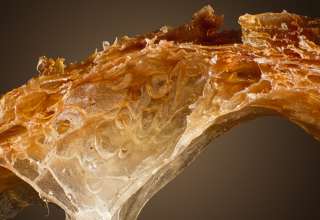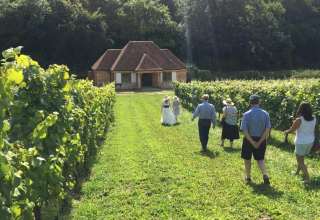Is the Champagne house’s 2009 vintage “a step closer to the ideal”, as its celebrated chef de cave suggests? Adam Lechmere takes a look

Champagne Dom Pérignon has just released its 2009 vintage – the £130 ($170) launch accompanied by the usual gnomic commentary from the house’s entertaining chef de cave, Richard Geoffroy.
Geoffroy is one of Champagne’s most celebrated bosses. Dom Pérignon has serious heft. It’s owned by the vast luxury conglomerate LVMH – its sister houses include Krug, Ruinart and Moët & Chandon – and Geoffroy regards it as his duty to push the boundaries in what is a very conservative business. “Being an iconoclast is something I’m working on,” he likes to say.
In person he’s small, perfectly tailored (at the tasting he wore a fine old-fashioned pair of polished black boots – the sort of footwear you might see on the retired bass player of a minor prog-rock band), and courteous as he answers questions in his near-flawless English. There’s a sardonic, very Gallic edge to his delivery: he has the look of a man who understands the inherent absurdity of selling a bottle of wine for many hundreds, even thousands, of pounds. But on the other hand, he knows there’s no doubting the extraordinary quality of Dom Pérignon.
Because it is lovely. Even the “difficult” vintages, like 2003, or 2006, shine under Geoffroy’s captaincy. The 2009 is opulent and luscious, with extraordinary persistence of flavour.
Geoffroy reckons he’s getting closer, with the 2009, to what he wants. “Each vintage is a step closer to achieving the Dom Pérignon ideal. It is the combination and diversity of all these wines – past, present and future – that bring greater coherence to the Dom Pérignon project.”
This is not a wine, it’s a mission. One of Geoffroy’s articles of faith (he calls it “my mission”) is that Champagne, like other wine regions, should make more vintages. The current model is to make a vintage only in the very best years and in ordinary years use reserve wines to make non-vintage (NV) wines.
“That might have meant something long ago, but nowadays it doesn’t work. Why should I restrain myself and write off a good vintage for the sake of artificial scarcity? Its old school luxury. I really believe that Champagne should be making more vintage wines. Let’s bring more excitement in. My Utopia would be to be able to declare every vintage.”
Of course, vintage Champagne commands a premium price (around £130 a bottle for Dom Pérignon) so Geoffroy’s onto a good thing bringing out a vintage as often as possible. But that’s not his point, he insists. “My ambition is to witness the vintage. It’s a way of being authentic. You make what you have to from what nature gives you.”
Geoffroy is, above all, a wonderful salesman. You can imagine him wrapped in furs peddling whisky in the Klondike. He becomes lyrical as he describes Dom Pérignon’s Plénitude range.
“Plénitude is not part of wine jargon. It’s above wine in a way – it’s about life. The term Plénitude applies to all of us as individuals. The radiance, the serenity, the lightness of being in maturity. When people are in their plenitude it’s a period of time that doesn’t necessarily last for ever.”
Plénitude wines have undergone years of ageing on their lees – the dead yeast cells – before they are disgorged and released to the market. The idea is that a wine on the lees undergoes different ageing cycles, what Geoffroy calls the “mysterious evolution”.
“The yeast ferments and then dies, and the energy from the yeast goes to the wine. It’s a paradox: the more mature Dom Pérignon is, the more energised it is. It’s a mystery”
The first Plénitude is released at eight to ten years old, “when everything is in place, in harmony.”
Then comes the second Plénitude, a wine that is released after roughly 15 years, 12 of which have been spent on the lees. This as a wine with “intensity, vibrancy and life. It is bafflingly youthful. Insolently youthful.” The 1998 was released as P2-1998 in 2014, now on the market for around £295 a bottle.
The third Plénitude, P3, comes from wines that have spent at least 20 years ageing on lees. Made from vintages from 1966 to 1988, the wines are on the market now: the 1969 reaches prices of over £2000 ($2565) a bottle; the 1988 will set you back some £700 ($900).
You might think it a bit rich that Geoffroy should complain about Champagne houses creating “artificial scarcity” by only releasing the very best vintages, while Plénitude is all about dipping into the cellar and choosing the very rarest of all, at a crucial, unrepeatable moment in their evolution.
But for him, ageing on the lees is all. He shakes his head when he contemplates his fellow chefs de cave who deem it unimportant.
“Yeast maturation is crucial. I’m puzzled that top Champagne winemakers [he mentions one or two names] are in denial about yeast fermentation. It’s not only the aromatics, it’s the texture, the energy, the depth. It’s fundamental.”
Fundamental, but not wholly understood, and certainly not given enough respect. “We’ve been studying yeast for thirty years but there are still unknowns. Yeast is one cell; human beings are a zillion cells, but we all belong to the same mystery of life.
“We humans should start accepting there is life outside humankind, and that our relationship to nature is wrong. We think we are dominant, which is foolish. Maybe there are other species which feel the same.”
Dom Pérignon, then, is a mystery as unfathomable as the meaning of life itself. No wonder it’s so expensive.
Dom Pérignon 2003, Champagne, France
Fresh but intense, savoury with spikes of acidity, hints of salinity and lovely bitterness at the end. It’s persistent, redolent of briar and hawthorn, the length going on and on. Opulent as you’d expect in a heatwave vintage, but no over-ripeness. Very fine. £100 ($130) Widely available
Dom Pérignon 2006, Champagne, France
2006 was difficult – a dry early summer followed by a rainy August. “This is the one I lost most sleep over,” said the normally-unflappable Richard Geoffroy. It has a lovely earthy, full nose, then creaminess on the mid palate, lightness (you wonder where it’s going) then suddenly ripe raspberry-inflected fruit and superb persistent length. Very delicate and complex. £100 ($130). Widely available
Dom Pérignon 2009, Champagne, France
Sweet appley fruit on the nose, cream and citrus, hint of meringue and sea-shell. Very full opulent mousse, fine tannic weight, dry palate becoming opulent, washed with juice, fine sour finish. Stupendous length with complex lingering aromas, fresh-pressed linen, brioche. Elegant, complex, with decades of life ahead of it despite low acidity. £130 ($170) available September 2017







